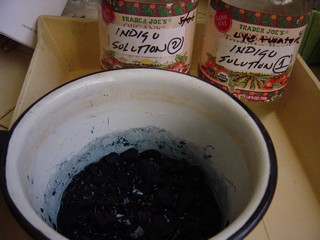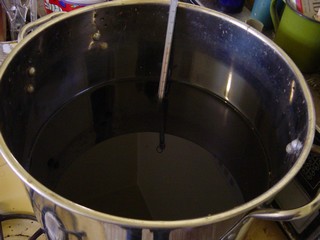About twenty years ago I was taking a “commuter flight” – that is a really small plane, brown bag carry-on lunches – from New York City to Washington DC. The two guys in the seats in front of me were swapping air plane stories which always seemed to end with “and then we landed in a field”. This is somewhat like my Indigo vat dyeing experience except that my stories would end with “and then the vat didn’t work”.


After my beginners luck Fennel experience Indigo put me in my place. I’ve taken enough extension anthropology and archaeology classses to be aware that textile technology goes really far back in human history. Indigo is one of the more technologically complicated processes – reduction – and I frankly can’t imagine how we came up with it.
(As an aside see Elizabeth Barber’s “Prehistoric Textiles: the development of cloth in the Neolithic and Bronze Ages”. Interesting quotes from angry Sumerian business women proving that freelances have never been paid on time since the dawn of history. And, we have spend alot of time either killing each other or dyeing cloth.)


Two major mistakes which hopefully will save someone else time and tears.
First: use the right chemicals. I misktanly used Urea instead of Spectralite. (Vat doesn’t work.)
Second: DON’T get the vat too hot. Wierd scum on top of vat. (Vat sort of works.)









